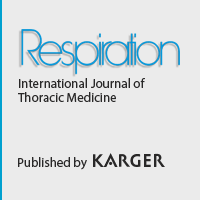| Title | Evaluation of a Novel Endobronchial Ultrasound-Guided Lymph Node Forceps in Enlarged Mediastinal Lymph Nodes. |
| Author(s) | Darwiche et al |
| Source | Respiration 2013;86 (3):229-36 |
| Abstract | BACKGROUND:
Endobronchial ultrasound-transbronchial nee dle aspiration (EBUS-TBNA) is a useful technique for cytological assessment of enlarged mediastinal lymph nodes with a high diagnostic yield for lung cancer. However, the small sample volume can be problematic in diagnosing benign diseases and for molecular analysis of malignant tumours. OBJECTIVES: The aim of the study was to evaluate a novel lymph node forceps for EBUS-guided lymph node biopsy (EBUS-transbronchial forceps biopsy; EBUS-TBFB) in malignant and benign conditions concerning safety, feasibility, and diagnostic yield. METHODS: Patients with enlarged mediastinal or hilar lymph nodes were included. EBUS-TBNA was performed followed by EBUS-guided TBFB with the lymph node forceps. Three biopsy specimens were obtained. The diagnostic yields of EBUS-TBFB, EBUS-TBNA, and the combination of both sampling techniques were compared. Complications were systematically recorded. RESULTS: Fifty-five patients with enlarged mediastinal nodes were enrolled into this study. Specimens adequate for histological analysis were obtained in all but one case using EBUS-TBFB. EBUS-TBFB increased the diagnostic yield of EBUS-TBNA from 64 to 93% in benign conditions. The overall diagnostic yield was higher compared to EBUS-TBNA alone. EGFR mutation analysis could be achieved in the forceps biopsy samples as needed. No complications were observed. CONCLUSIONS: EBUS-TBFB with a novel lymph node forceps is safe and provides adequate histological specimens of enlarged mediastinal lymph nodes. EBUS-TBFB increases the diagnostic yield in benign conditions and may add value in molecular analysis of non-small cell lung cancer. |
| FREE PDF Download | http://www.wabipacademy.com/downloads/literature/diagnostic-2013-b.pdf |









